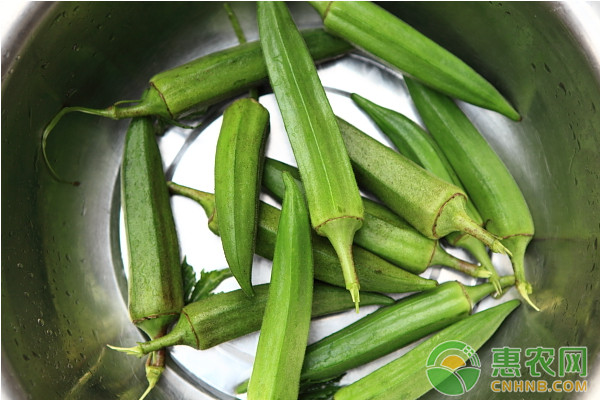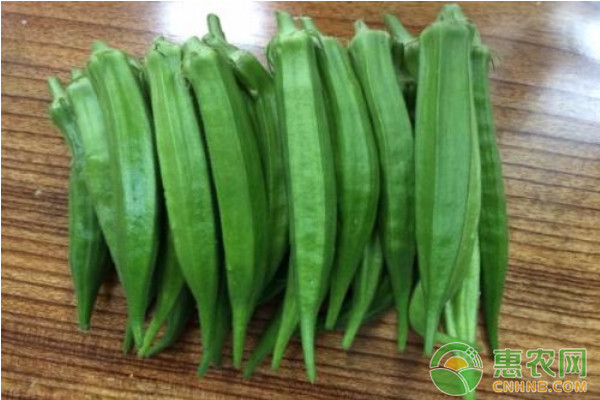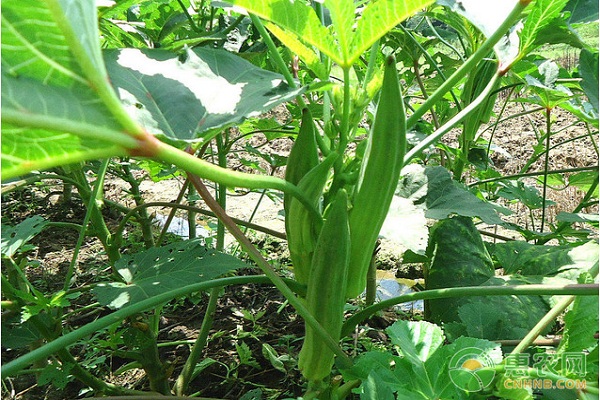Okra, also known as capsicum, has a smooth, non-greasy taste and a unique aroma. In recent years, it has become a popular vegetable in Japan, Taiwan, Hong Kong and Western countries. So how is the okra planted? The following small series talk about the cultivation technology of the okra. I. Okra growing environment Hi warm climate, not cold-resistant, planted with deep fertile soil and sunny land. Okra is usually sown in March and can germinate after 3 to 5 days. The seedling period will last for more than 40 days, and the results will begin in May. The growth cycle is generally more than 7 months. Moisture: Okra is drought-tolerant and moisture-resistant, but not resistant to phlegm. When the soil moisture in the germination period is too large, it is easy to induce seedling blight. The result is drought, the plant grows poorly, and the quality is inferior. The soil should always be kept moist. Illumination: Okra is particularly sensitive to light conditions, prefers strong light, requires long light hours, and sufficient light. Should choose the sunny block, strengthen ventilation and ventilation, pay attention to reasonable close planting, so as not to shade each other, affecting ventilation and light transmission. Temperature: Okra is warm, afraid of cold, and has strong heat resistance. The growth is stopped below 8 ° C. When the temperature is 13 ° C and the ground temperature is about 15 ° C, the seeds can germinate. However, the suitable temperature for seed germination and growth period is 25-30 °C. The monthly average temperature is lower than 17 °C, which affects the flowering result; when the night temperature is lower than 14 °C, the growth is slow, the plant is short, the leaves are narrow, the flowering is less, and the flowering is more. 26-28 °C moderate temperature and flowering, high fruit setting rate, fast fruit development, high yield and good quality. Soil: Nutrition Okra has a wide adaptability to the soil and can not be grounded. Saline-alkali land can also be planted, but it is more suitable for loam or sandy loam with deep, loose and fertile soil and good drainage. Fertilizers are mainly nitrogen in the early stage of growth, and more phosphorus and potassium fertilizers are needed in the middle and late stages. Second, the cultivation season Okra is warm, afraid of frost, the whole growth period should be arranged in the frost-free period, and the flowering result period should be in the warm and humid season. Open field cultivation, sowing from April to June in the north and south, harvesting from July to October. North China is generally planted in mid-to-late April to May. In the cold regions of the north, the greenhouses and plastic greenhouses are commonly used for seedlings. After the early spring and evening creams, they are planted in Daejeon. Third, the growth cycle 1, germination period Sowing 2 leaves of cotyledons is germination, about 10-15 days. It can be germinated and unearthed by sowing for 4-5 days at 25-30 °C. It usually takes about 7 days for the seedlings to be released from the open field, and the mulching film can be released 2-4 days in advance. 2, seedling stage It takes about 40-45 days from the flattening of 2 cotyledons to the opening of the first flower. After the cotyledons are fully expanded, the first true leaves are unfolded after 15-25 days. A true leaf occurs every 2-4 days later, in which the first two true leaves are round. The growth of seedlings is slow, and even worse when the ground temperature is too low. 3, flowering results From the beginning of the flowering to the end of harvesting, it takes about 85-120 days. It takes 50-55 days after emergence, and the first flower is open. The first two flowers take a little longer from flowering to harvesting. The harvest time is shortened as the temperature increases. Usually harvested for the first time in about 70 days after sowing. It can be harvested 4 days after flowering at a temperature of 28-32 ° C and a night temperature of 18-20 ° C. After the flowering result of the okra, the growth rate is accelerated, and the growth is enhanced, especially at a high temperature. A true leaf is developed every 3 days in July, and a true leaf is required to be carried out in 4-5 days in September. Fourth, cultivation techniques 1. Soil preparation: Prepare the plot for planting okra. After harvesting, we should carry out deep ploughing in autumn and winter and deep plowing 30 cm to deepen the mature soil layer, further loosen the soil and enhance soil water storage and fertilizer retention capacity. Before planting, the land will be fine, flat, loose and soft. The okra needs more fertilizer. It applies 5,000 kg of composted manure and 20 kg of compound fertilizer per acre. It is spread on the ground before the land preparation, and then deep into the soil, mix well and mix the soil and fertilizer, then ditch the ditch. 2. Suitable sowing: Most of them use the live broadcast method, and they can also be transplanted. It is usually planted in mid-May, planted in mid-June, and harvested in August. 3. Intercropping: After the emergence of the okra, the time to seedlings, 2 to 3 true leaves, remove the disease, weak, small seedlings, leaving 2 plants per hole. After the seedlings are unearthed, they should be cultivated and weeded in time, once every 10 days. Before the first flower is opened, it should strengthen the cultivating, appropriate seedlings, and promote root development. Cultivate the soil before mulching to prevent the plants from lodging. 4. Fertilizer pipe protection: Okra is more drought-tolerant and moisture-resistant, requiring higher air and soil moisture during growth, especially in the flowering stage. Okra has a long harvest period and the entire growth period is about 100 days. Appropriate topdressing on the basis of applying the base fertilizer, the first topdressing is carried out after emergence, and 6-7 kg of urea per acre is applied. 5. Set up the leaves: In summer, it is necessary to set up a bracket to prevent lodging. A bamboo pole or branch with a length of 1 meter can be inserted next to the root of the plant to support the plant. In the early stage of growth, it is necessary to prevent excessive growth of nutrients, and in the middle and late stages, the old leaves of the sections below the harvested tender fruit are removed in time. The seed should be picked up in time to promote the ripening of the fruit to facilitate the fullness of the seeds and improve the quality of the seeds. 6. Disease prevention and treatment: (1) Disease The okra can be infected in the seedling stage and the adult stage. When the seedlings are 20 cm long, the diseased lesions spread from the leaves to the main stem, causing the stems to become thin and faded, until the whole plant is wilting or knocking down. Most of the leaf infections start from the lower tip or chloroplast of the plant. At the beginning of the disease, the dark green water-stained lesions are not shaped, and the enlargement turns brown. Control method: Grasp 72% manganese zinc, frost urea WP (Klu) 500 times solution or 69% Ankang Zn WP900 times solution or 64% antivirus WP400 times solution or 58% metalaxyl, manganese zinc WP500 times the liquid spray 1 time every 7-10 days, prevention and control 2-3 times. (2) Viral disease Okra virus disease is the main disease in the production of okra, and the adult stage is heavier than the seedling stage. After the plant is infected, the whole plant is damaged, especially the top leaves are very obvious, and the leaves show mosaic or brown markings. Early disease, plant dwarf, less or less firm. Control method: do not keep seeds from diseased fields, choose resistant varieties, use 5% bacteria to clear WP400-500 times solution or 20% virus AWP400 times solution or 15% phytopathic 1000 times solution or 83% inhibitors 100 times prevention and control 3 times, once every 7-10 days. 7. Pest control: (1) Poisonous caterpillar Okra is mainly harmful to the seedling stage, and often eats the leafy meat into a nick after emergence, and leaves the veins when it is severe. It can be used to remove 101500 times of EC1500 times solution or 5% sharp force SC1500 times solution or avermectin EC + fenvalerate EC3000 times solution spray. (2) American Liriomyza Okra can occur in the whole growth period, mainly for damage to leaves. It can be used with 1.8% Aifuding EC (avermectin) 5000 times solution or 52.25% agricultural land EC1000 solution or 48% lesben EC1000 solution or 5%. Rui Jinte SC800 times liquid prevention. (3) Ground Tiger The ground tigers crouched out at night, often biting off the main stem during the seedling period, causing broken seedlings. Commonly used sweet and sour vinegar to lure capture or catch in the morning, or use special pesticides to kill. The above is the planting technology of the okra. Okra has a lot of value, his pharmacodynamic value is very high, and the market value is also very high. However, special attention should be paid to the pests and diseases in the okra planting process. The pests and diseases are relatively more than other plants. Blood Pressure Transducer,blood pressure monitor,blood pressure machine,blood pressure monitor price,blood pressure Anesthesia Medical Co., Ltd. , https://www.trustfulmedical.com


What season is Okra planted? Okra cultivation techniques
Next Article
Kind of good winter celery catch four points
Prev Article
Sweet cherry summer shears catch five points